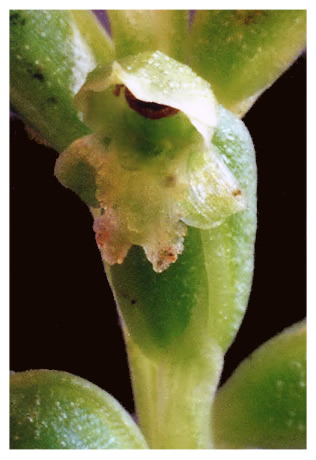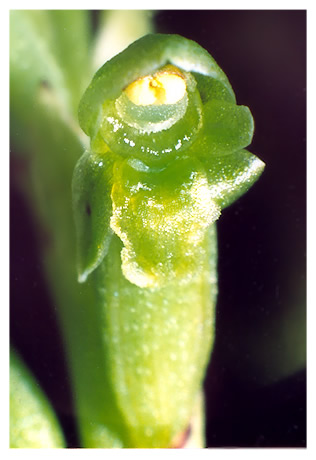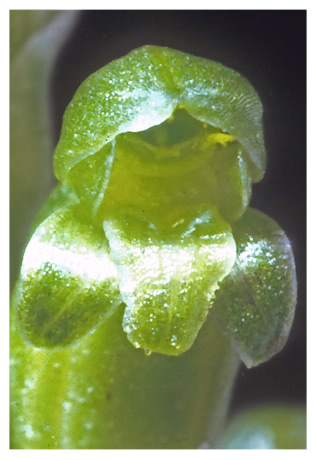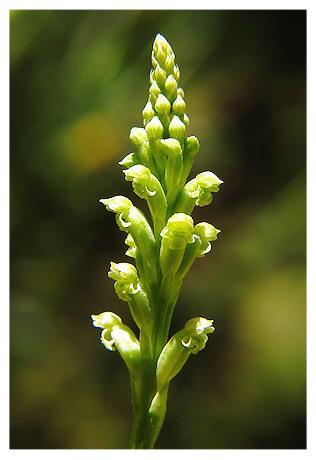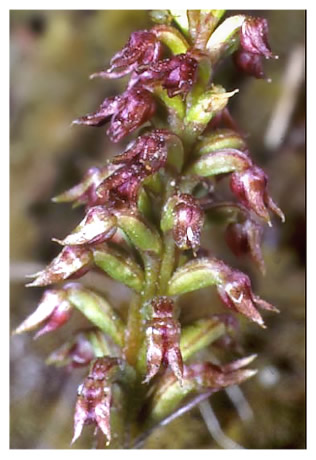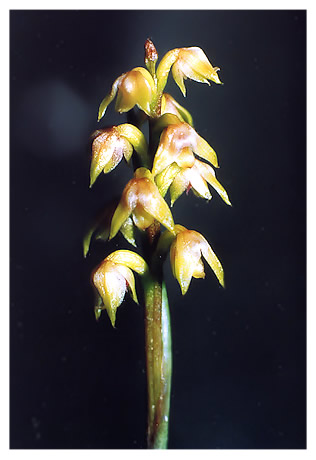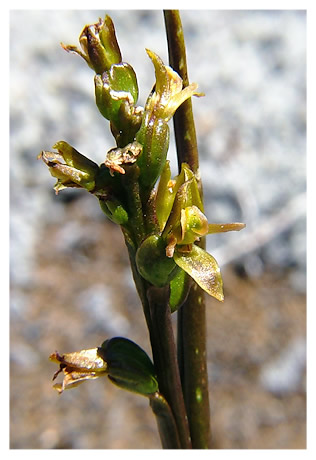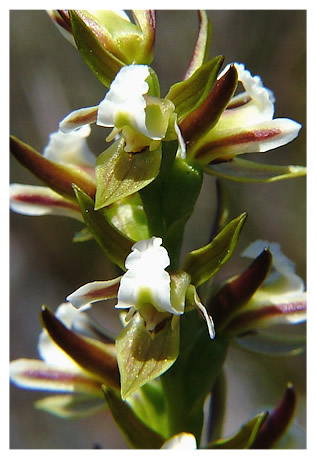Onion and Leek Orchids |
Microtis arenaria Habitat: sandy soil, dry gumland in scrub, dunes. Northland Key features: hump-backed ovary and forked tip to the labellum. |
Microtis oligantha Habitat: montane to alpine open short grass turfs, or boggy areas, streamsides, lakesides. Key features:few flowers with a squat labellum a large callus and almost straight, pendant lateral sepals. |
Microtis parviflora Habitat: lowland, open places; not common. Key features: labellum long, tapering, usually strongly curled and not notched, margin plain. |
Microtis unifolia Habitat: lowland to montane; a wide range of open habitats, both native and pasture or garden, often in grass. Throughout Key features: very ornamented labellum margins, single prominent basal callus. | |||
Genoplesium nudum Habitat: lowland to montane, poor damp soil, winter wet clays, often with sundews and sedges. Throughout. Key features: leaf much shorter than the base of the flower spike, flowers maroon. |
Genoplesium pumilum Habitat: locally common in gumland scrub and winter wet clays, often with sundews and sedges. South to Nelson. Key features: the leaf extends into the flower spike flowers dominantly creamy green. |
Prasophyllum colensoi Habitat: lowland to alpine open areas but most common in short alpine grassland. Throughout. Key features: rather pointed tepals, grassland habitat, flowers often varying in colour within a population. |
Prasophyllum hectorii Habitat: sedgelands, in flowing or still water, often floating, its roots barely touching the peat. Key features: very wet habitat, white, frilled labellum. | |||


